Did you know that there are a variety of pipe nipples available? Pipe Nipples can be found with a wide range of connection combinations. Some pipe nipples look very similar to one another which will make it difficult to know which one you need. But don't worry, we are here to help you out.
Throughout this blog post, we will review 10 different types of pipe nipples and explore what sets them apart from other pipe nipples in the industry. Let's take a look!
Prefer watching videos over reading? Check out our video above. The video delves into the same topic as the blog post!
What is a Pipe Nipple?
When it comes to plumbing and piping, a nipple is a fitting that is a short piece of pipe. A nipple is usually provided with a male pipe thread (MPT) connection at each end of the fitting, which are used to make a watertight seal when connecting piping to threaded fittings, valves or equipment. Pipe nipples are in lengths up to 12”, lengths over 12” are referred to as ready cut pipe the thread specifications are identical however the tolerance on the length is less stringent on ready cut pipe.
To learn more about pipe nipples and ready cut pipe, check out our blog post, Ready Cut Pipe.
Barrel Pipe Nipple
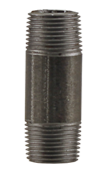 Pipe nipples are sometimes referred to as barrel nipples which unless otherwise stated, are tapered NPT threaded at each end with an unthreaded section in the middle. Nipples that are threaded on both ends are commonly referred to as T.B.E which stands for threaded both ends. When looking at the lengths of the nipple, the length is specified by the overall length including the threads.
Pipe nipples are sometimes referred to as barrel nipples which unless otherwise stated, are tapered NPT threaded at each end with an unthreaded section in the middle. Nipples that are threaded on both ends are commonly referred to as T.B.E which stands for threaded both ends. When looking at the lengths of the nipple, the length is specified by the overall length including the threads.
T.O.E Pipe Nipple
T.O.E stands for threaded one end. This style of nipple is typically used as legs for oil tanks. T.O.E nipples are sometimes confused with weld nipples but true weld nipples have a beveled end finish that is required specifically for butt weld connections.
Weld Pipe Nipple
Weld nipples have no threads and connect to tube fittings by welding versus threading. Weld nipples are suitable to be used under extreme conditions like vibration, pressure surges, and changes in temperature. Weld nipples are not weakened by the cut threads which can reduce the wall thickness and therefore weaken the structural strength.
Close Pipe Nipple
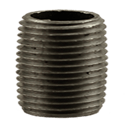 A close nipple has no unthreaded area which means that when two female fittings are screwed tightly onto both ends of the nipple, very little of the nipple will still be exposed. When ordering a close nipple, they are ordered by the diameter by close, for example 1/2" x close.
A close nipple has no unthreaded area which means that when two female fittings are screwed tightly onto both ends of the nipple, very little of the nipple will still be exposed. When ordering a close nipple, they are ordered by the diameter by close, for example 1/2" x close.
Shoulder Pipe Nipple
Shoulder nipples are longer than a close nipple and include a very short unthreaded space between the threads. The unthreaded space is not large enough to fit a pipe wrench. When two female fittings are screwed onto either end, a small piece of nipple will remain exposed. A shoulder nipple is the first length of nipple that is available up from a close nipple.
Hex Pipe Nipple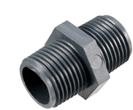
A hex nipple gets its name from the hexagon shaped middle section. The hexagon shape allows for a wrench to grasp it securely. If you come across a hex nipple with two different sizes on each end, it is referred to as a reducer or unequal nipple.
Right-Left Hand Pipe Nipple 
Right-left hand nipples have a right-hand thread on one end of the nipple and a left-hand thread on the other end. This style of pipe nipple is typically used for gas piping or piping applications where using unions is not allowed. Right-left hand nipples can also be used to connect to female pipe thread in installations where there is no room for a union.
Swage Pipe Nipple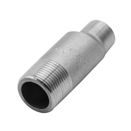
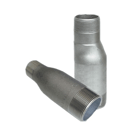
Swage nipples are used to bring the flow of fluids from one pipe size to another pipe size. You can find swage nipples that are plain, beveled or with threaded ends. The function of a swage nipple is to change the pipe’s diameter and to connect two pipes of different sizes. The swage nipple is divided into concentric swage nipple and eccentric swage nipple. Concentric swage nipple is mainly used for vertical pipeline; eccentric swage nipple is mainly used in horizontal pipelines. Eccentric reducers can be installed in either top flat or bottom flat orientations, for example flat top installation can be used at the suction side of pumps to ensure air does not accumulate in the pipe. The gradual accumulation of air in a concentric reducer could result in a large bubble that could eventually cause the pump to stall or cause cavitation when drawn into the pump. Horizontal gas reducers are always eccentric, in bottom flat orientation, which allows condensed water or oil to drain at low points.
 Seamless Pipe Nipple
Seamless Pipe Nipple
Seamless pipe nipples do not have a welded seam that runs up the length of the pipe nipples. Seamless pipe nipples are structurally stronger and are designed for high pressure applications.
Grooved Pipe Nipples
Grooved pipe nipples are commonly used in commercial or industrial construction, mining and process piping applications. There are three common configurations Groove x Groove, Groove x Bevel, and Groove x MPT. They are available in a large range of sizes from 1-1/2" to 12" and are fully interchangeable with popular groove pipe fittings brands such as Shurjoint & Victaulic fittings.
Combination/King Pipe Nipple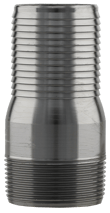
Combination nipples or sometimes referred to as king nipples, are an extremely versatile way of transitioning from hose pipe to threads. The end connections are for fluid service only and should not be used for air service or steam service. The most common connection is MPT but you can also find them with female NPT (National Pipe Thread), flanged or a blank beveled end for welding. Combination nipples are sometimes confused with male adapters as they look quite similar, but male adapters are designed for polyethylene pipe.
Being aware of the different types of pipe nipples will help you narrow down which pipe nipple you need for your particular application. There may be other nipples in the industry, but these are the more common types that you'll most likely run into.
Have further questions about this subject?
Head over to Boshart's Knowledge Base: technical product information, guidelines, and more.

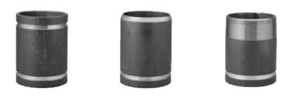


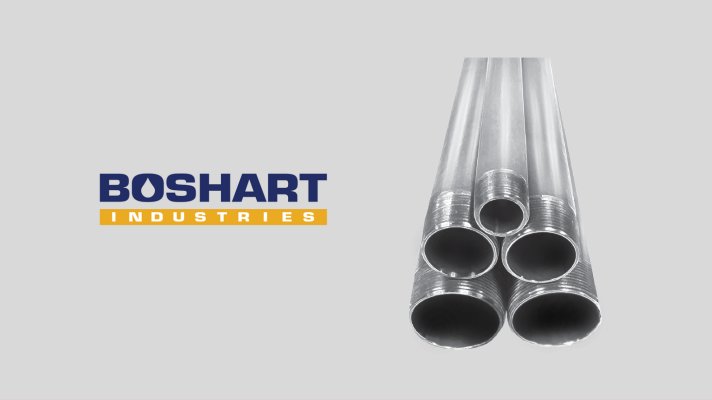
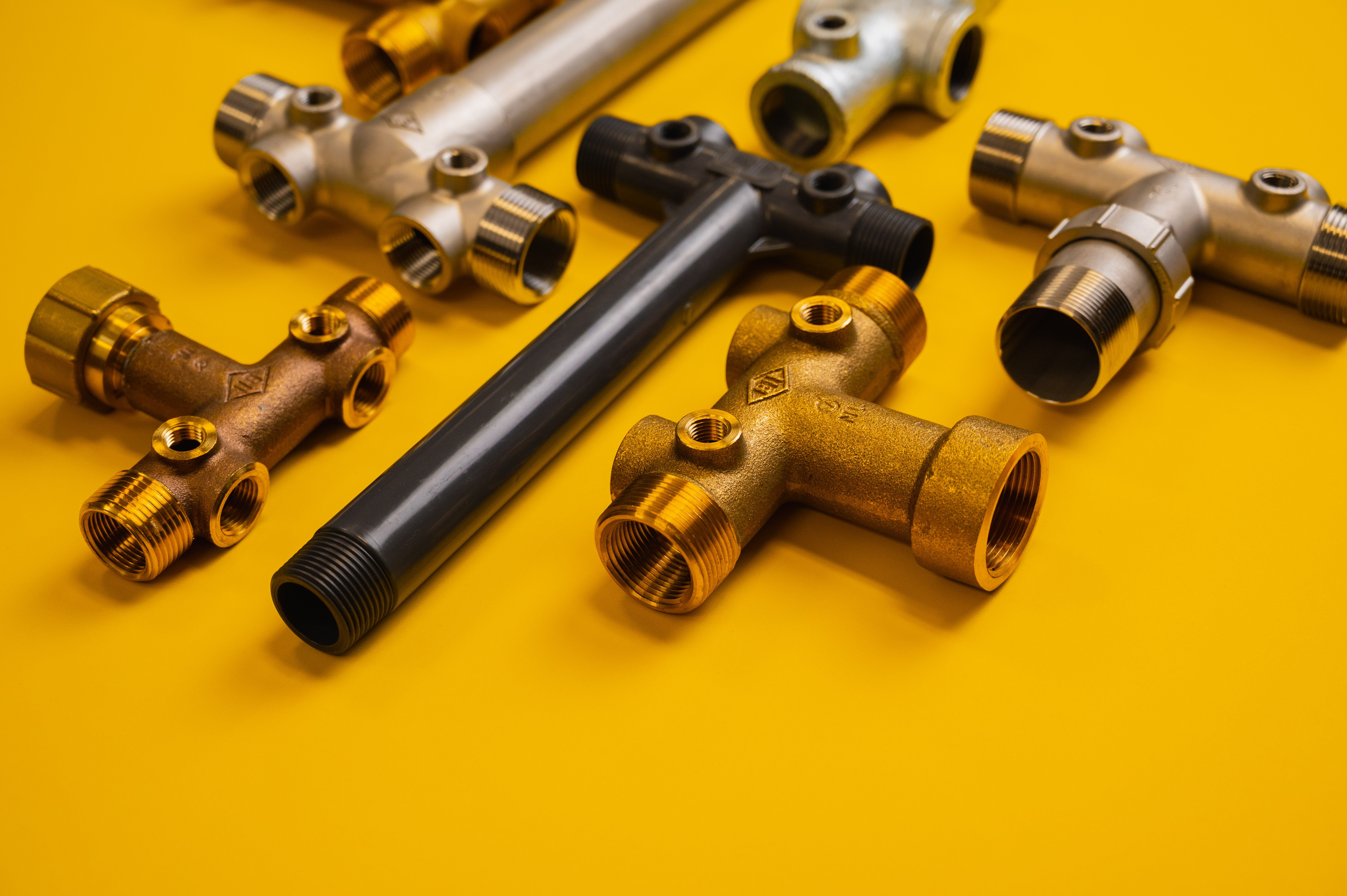

SHARE